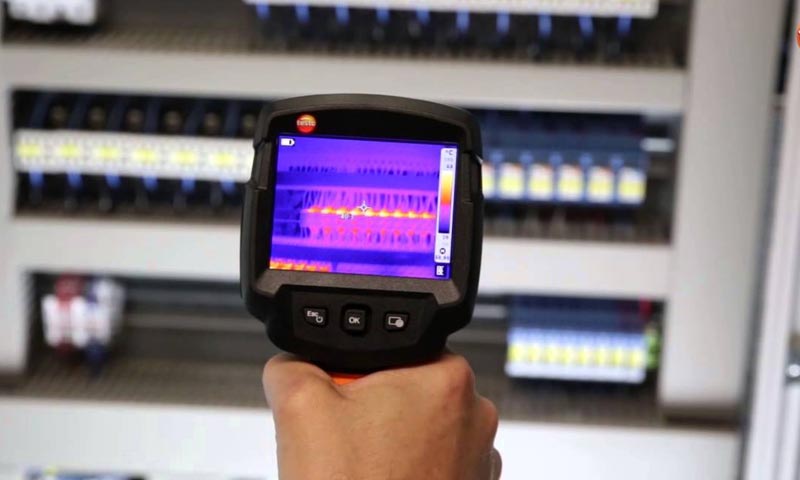
Thermal imaging for electrical faults and hot spots
Electrical load, safety and emissivity:
Thermal Imagers today are rugged, easy to use and more affordable than even just a few years ago. Which makes them a much realistic solution for every day electrical maintenance. To use it, a qualified electrician or technician points the thermal imager at the equipment and scans the immediate area, looking for unexpected hot spots. The imager produces a live image of the heat emitted from the equipment. In order to capture the image, all you'll need to do is squeeze the trigger. When the inspection is complete, you are able to upload the images onto a computer for a closer analysis, reporting and future trending.
Loading:
The Electrical equipment that is being inspected must be under at least 40% of nominal load in order to detect problems with a thermal imager.
Safety:
Electrical measurement safety standards still apply, under NFPA 70E*. Standing in front of an open, live, electrical panel requires personal protective equipment (PPE). Depending on the situation and the incident energy level of the equipment being scanned, the equipment usually needed are:
- Flame resistant clothing
- Leather-over-rubber gloves
- Leather work boots
- Arc flash rated face shield, hard hat, and hearing protection or a full flash suit
Emissivity:
Describes how well an object emits infrared energy, or heat. Which usually affects how well a thermal imager can accurately measure the object's surface temperature. Different materials emit infrared energy in different ways. Every object or material have specific emissivity that is rated on a scale of 0 to 1.0. For thermal imagers to report accurate temperatures, the higher emissivity, the better.
What is thermal imaging?
Thermal imaging is an infra-red technology that record the temperature of components in various parts of an electrical installation. For example distribution boards, fuse boards, control panels, switch gears and switchboards.
Thermal imaging identifies faults in seconds, before they could potentially cause a break down or fire, allowing preventative maintenance to be planned with minimal disruption to workflow.
